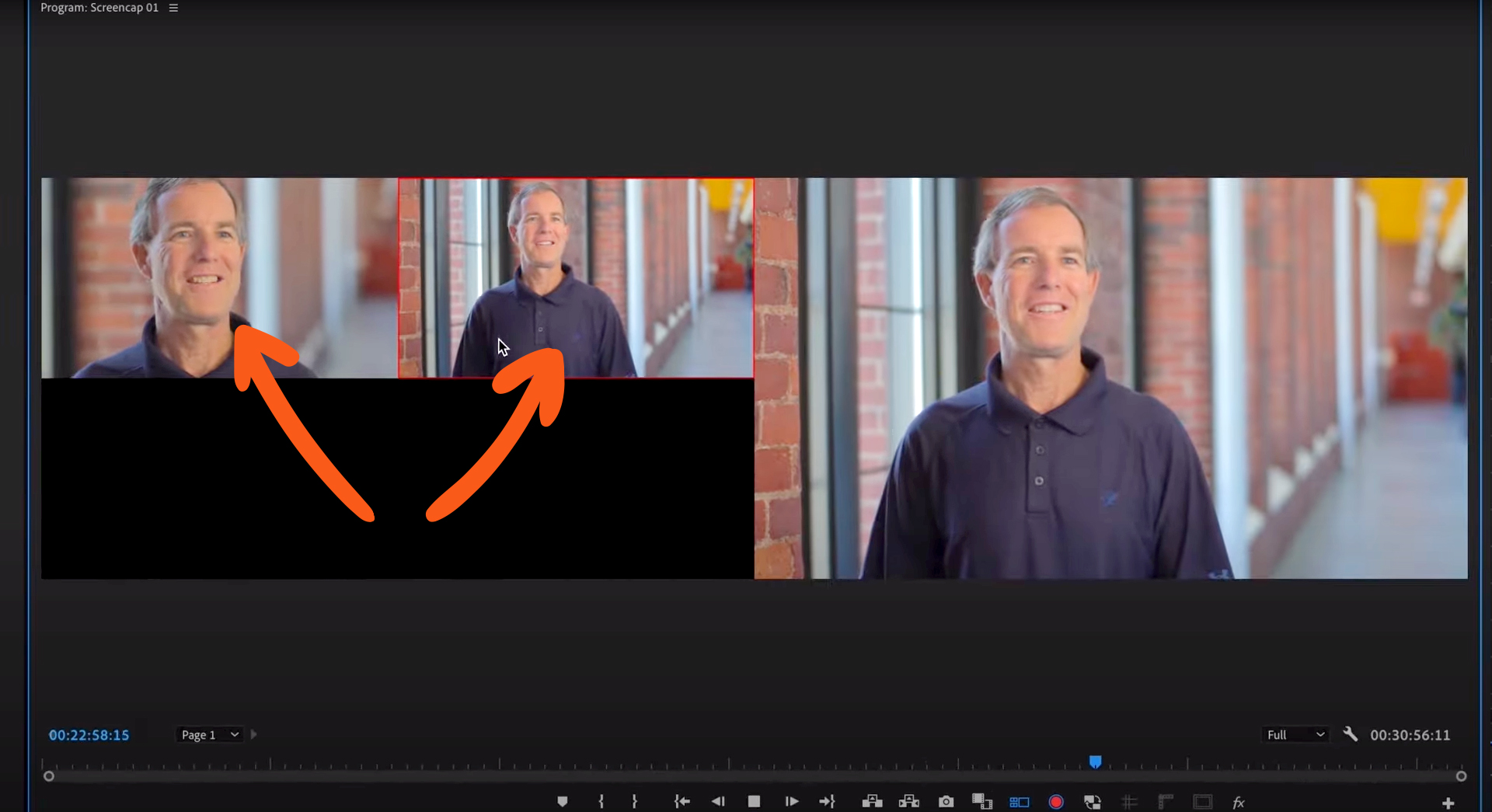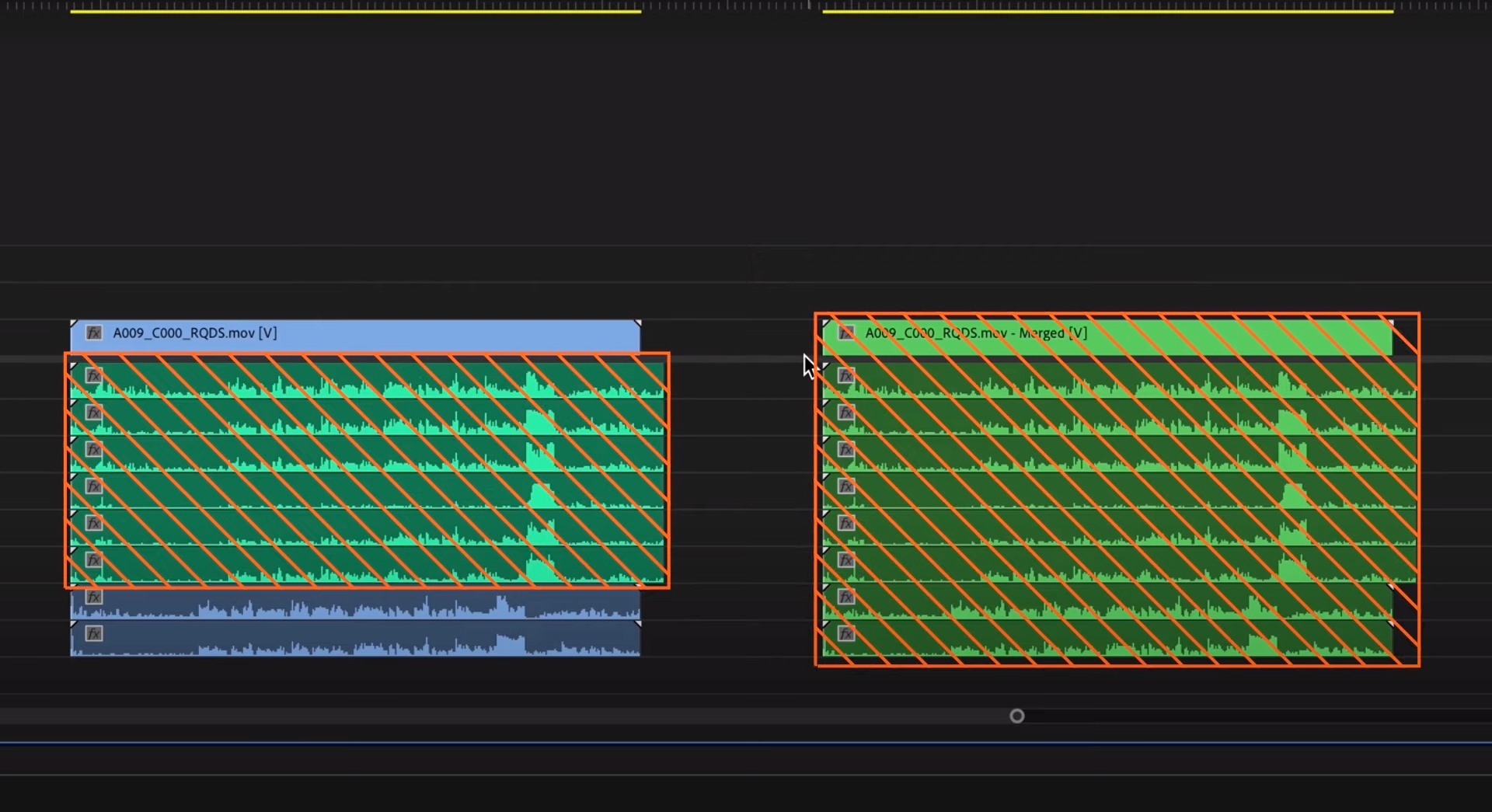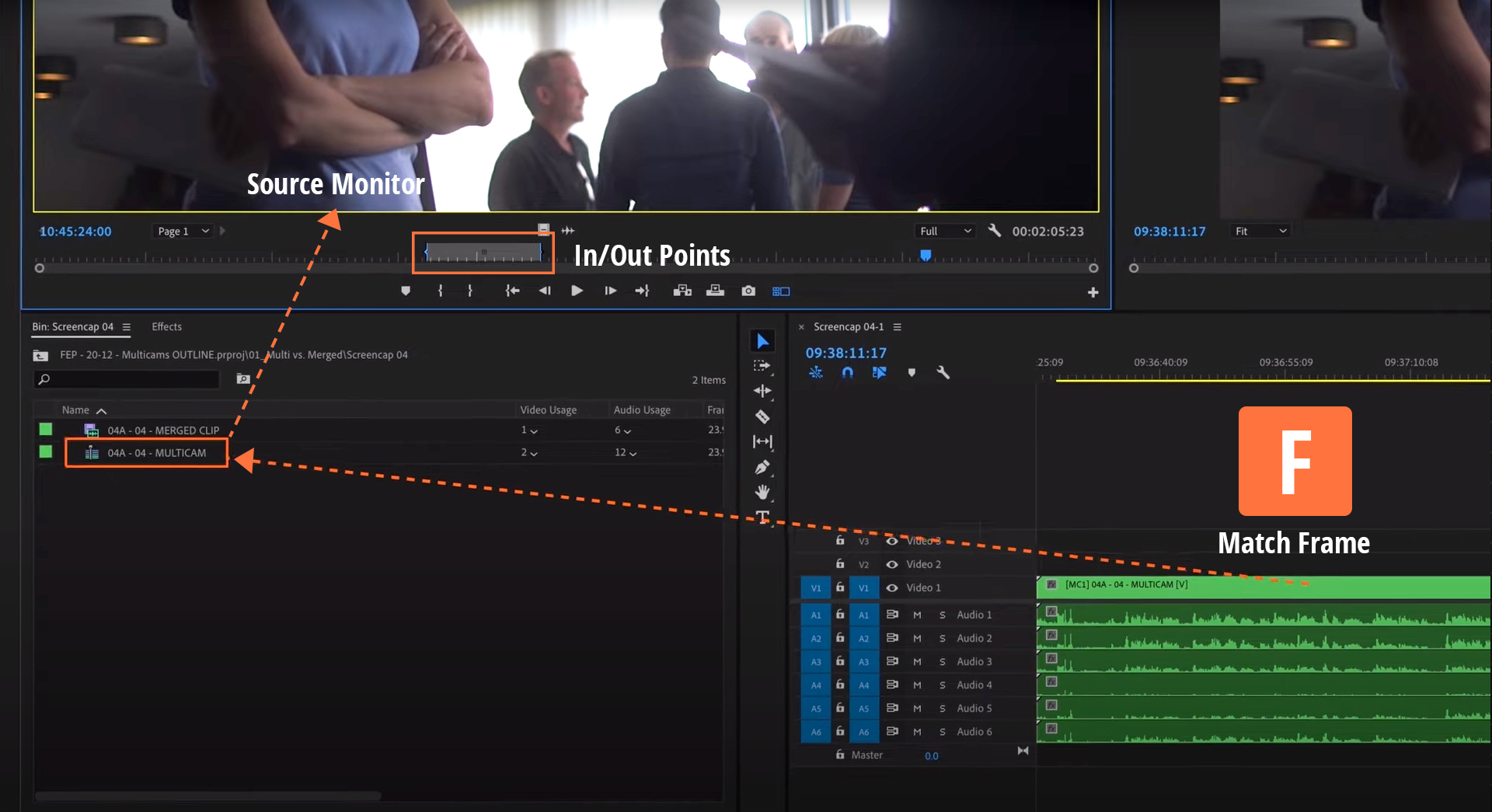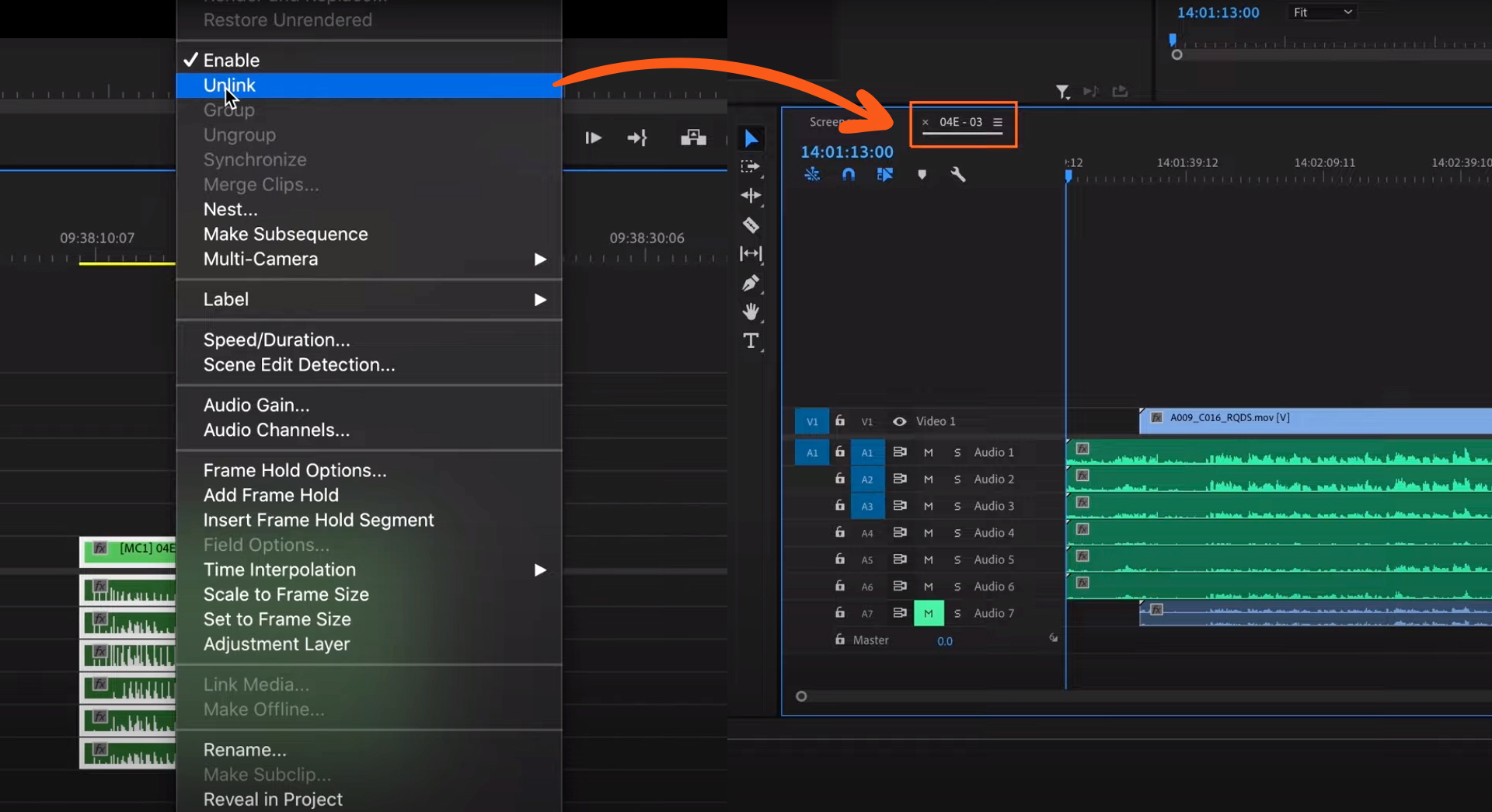Multicams or Merge Clips in Premiere Pro: Which is Best?
On this submit, we’ll be speaking concerning the professionals and cons of working with multi-cams and merged clips in Premiere Professional.
Premiere is a robust enhancing device, and considered one of its best strengths are its extremely adaptable sequences, particularly the multicam. You may do not know what a multicam is, and that’s okay since you’re going to study all about what makes them so nice, and the way they evaluate to the “merge clips” function.
Watch the video or preserve scrolling to learn the transcript!
First, you will have heard the time period “multicam” however precisely is it?
Effectively, when you will have footage from one supply, the digicam as an illustration, and audio from one other supply, maybe it’s the audio recording gadget your sound recordist was utilizing, you want a option to sync them up in order that they keep related while you’re enhancing.
Historically, you may suppose “merge clips” appears like the way in which to perform that however there’s one other, higher, option to do it and that’s to create a multicam.
So, let’s break down the variations between these two choices and work out how they stack up towards one another.
Problem 1: Variety of Clips you Can Mix
The primary necessary factor to find out about multicams vs. merged clips is the quantity of footage and audio you may mix.
With merged clips, you may mix one video supply, and as many audio sources as you need. This implies if you happen to have been filming with one digicam and a number of audio sources, reminiscent of a increase microphone, a lavalier, and the on-camera audio, you may mix all of that audio along with one supply of video.
However if you happen to have been filming with two or extra cameras, reminiscent of engaged on a scene with many characters directly, or conducting an interview or filming a music efficiency, you wouldn’t have the ability to merge all of these video clips collectively. That’s the place multicams are available in.
Multicams can mix as many video and audio sources as you need.
That is particularly necessary if you wish to use the highly effective multicam digicam switching instruments in Premiere to choose the digicam angle you wish to view, and even reduce between them throughout reside playback.
Multicam digicam switching instruments are nice for issues like interviews
WINNER: MULTICAM
Multicams win this class, and that’s as a result of not solely can you employ multicams to sync one supply of footage and audio, it’s additionally attainable to truly modify your multicam AFTER you’ve created it.
Problem 2: Modifying Synced Clips After Creating Them
So the following merchandise on the guidelines is modifying the synced clips after you’ve created them.
When you create a merged clip, you’re unable to change it. It’s principally like a model new clip in your bin, and you’ll’t change it. So if you happen to made a mistake, and perhaps misaligned the audio and the video, or by accident used the incorrect observe from the audio recording and wish to swap it out, that received’t be attainable with out really re-creating the complete merged clip.
Whereas multicams are, primarily, simply nested sequences with some fancy settings. So when you make a multicam, you may select to Open in Timeline, and this may can help you see the contents of the multicam, and modify them as wanted.
When you’ve created the merged clip, you may’t change it!
WINNER: MULTICAM
Not all productions are created equal in terms of being exact with recording audio and video, many editors must have that type of adaptability of their workflow to vary issues after the actual fact. That is very true if you happen to work on non-narrative initiatives the place you is likely to be discovering what video clips sync to which audio clips as you go alongside.
Problem 3: Metadata
And that brings up the following level, and that’s how metadata is preserved and used whenever you create merged clips or multicams.
Now chances are you’ll be asking “What do you imply by metadata?” There are two key items of metadata that the majority editors like and your shade and sound distributors want for a profitable collaboration.
The primary is “tape title” or “reel title.” You’ll have seen this time period on the Relinking Offline Media display. This piece of metadata is nice for serving to software program like Premiere and DaVinci Resolve efficiently relink from transcoded media, like what you may edit with, to the total decision digicam masters, that you simply may use for shade grading.
The second piece of metadata is the iXML tags saved in your professionally recorded audio information. This data tells you what every observe in your audio file is, and though Premiere sadly doesn’t have a easy option to view this data within the timeline, software program like ProTools does and sound mixers use that to assist them kind and arrange on their finish.
Multicams will retain your iXML metadata which your sound staff will thanks for!
Now, let’s speak about how this pertains to merged clips and multicams. Effectively, merged clips successfully make model new clips in your bin, and in doing so Premiere strips out of a few of this data. Issues just like the iXML observe names and the unique audio file title are now not obtainable, so if you happen to created an OMF or AAF file to do a turnover to your sound staff, they wouldn’t obtain that data from the audio you will have related to your merged clips.
There are workarounds to make this course of work, nevertheless we strongly recommend you skip merged clips altogether as a result of multicams will retain that necessary data for you all over your edit.
As soon as you’re accomplished enhancing with multicams and are able to ship your sequence to your sound staff, you may merely flatten your multicams, which is able to do away with them in your timeline and substitute them with the unique audio or unique video that was within them. This makes doing turnovers to your sound staff very easy as a result of all of that metadata goes to come back alongside together with your information now.
WINNER: MULTICAM
Multicams are the clear winner on this class, as they may protect all your necessary metadata and are utterly non-destructive in your workflow.
Problem 4: Match Body
And that brings us to a different crucial enhancing device. Match Body.
Match Body is a crucial device in your enhancing arsenal. In case you aren’t utilizing it proper now, right here’s a fast demonstration. In your timeline, hover your playhead over a clip. The default shortcut key for Match Body in Premiere is “F.”
That may load the clip you’re hovering over into the supply monitor. Not like merely double clicking on the clip within the timeline to load it into the supply, Premiere went into the bin, discovered that supply clip for you and loaded it into the supply monitor with the In and Out Factors set to match what you will have in your timeline. At this level, you may solely think about the ability this device supplies.
Multicams are nice if you happen to love utilizing Match Body
Thankfully Match Body works nice with each merged clips and multicams however with caveats.
While you use Match Body to load a merged clip into your supply monitor, you will have all the identical nice instruments at your disposal. You’ll be able to reduce a clip into your timeline, drag simply the video or simply the audio and alter the In and Out factors. Nonetheless, if you happen to for some motive wanted to get again to the ORIGINAL footage that was used to create that merged clip, you wouldn’t have the ability to very simply.
Multicams, nevertheless, can take Match Body one step additional. As soon as you employ Match Body to load the multicam into your supply monitor, you may press Match Body a second time, and that can take you INSIDE the multicam and cargo the precise video supply into your supply monitor.
Now you’re most likely questioning why I’d ever wish to do this? Effectively, it relies upon fully in your workflow. As an example, you may must shortly discover the bin of footage from that day of filming as you’re looking down a clip that you simply want.
That’s straightforward with multicams as a result of you may Match Body from the timeline to the supply, Match Body from the multicam supply to the unique video supply after which proper click on and select Reveal in Mission. And voila! You could have a bin containing the unique footage that was contained within the multicam, together with all the different video clips from that day of filming. You may usually do that when exporting video information for VFX distributors to just be sure you’re pulling from the unique supply footage to ship out.
Multicams are nice whenever you’re utilizing match body to seek out a clip that you simply want
So you may certainly use Match Body on each merged clips and on multicams, nevertheless if you happen to want much more performance inside Premiere, multicams will allow you to take Match Body one step additional and reveal the precise supply footage.
WINNER: MULTICAM
Problem 5: Working in Your Timeline
How do multicams work in your timeline in comparison with merged clips?
Effectively, the excellent news is that they work identical to any common clip in your timeline. You’ll be able to seize them and transfer them, you may unlink or hyperlink the audio from the video, you may scale and place them, apply results, stack them, draw a bit of automotive with them, no matter you wish to do.
There may be one finicky factor you have to be conscious of with multicams. In case you edit with a multicam in your timeline and you must occur to unlink the audio from the video, Premiere can get a bit of bit confused about what these audio clips are, since they’re technically nonetheless a multicam, however they’re additionally only a nested sequence.
In case you double click on on audio that has been unlinked from it’s video, it’ll take you contained in the multicam timeline. This isn’t an enormous deal, you don’t actually ever must double click on on any clips in your Premiere timeline to carry up issues like the results controls, so if you happen to’ve developed a “no double clicking” muscle reminiscence, you most likely received’t ever run into this downside.
Be careful – if you happen to double click on on audio that has been unlinked from it’s video, it’ll take you contained in the multicam timeline.
WINNER: IT’S A TIE!
Wrap Up
So who wins the problem? For us, multicams are the clear winner. They provide the type of flexibility wanted to maintain initiatives organized and in a position to scale up as they progress.
That’s to not say you must by no means use merged clips. If you’re an editor who’s working by your self in a vacuum, and also you don’t plan to do any turnovers to sound, shade or VFX, then merged clips will most likely work simply nice for you.
However in case you are usually collaborating with many alternative departments in submit manufacturing, you’ll wish to develop a workflow that doesn’t take away necessary metadata from clips and permits you probably the most flexibility to adapt and alter issues as you go.











Post a Comment
0 Comments